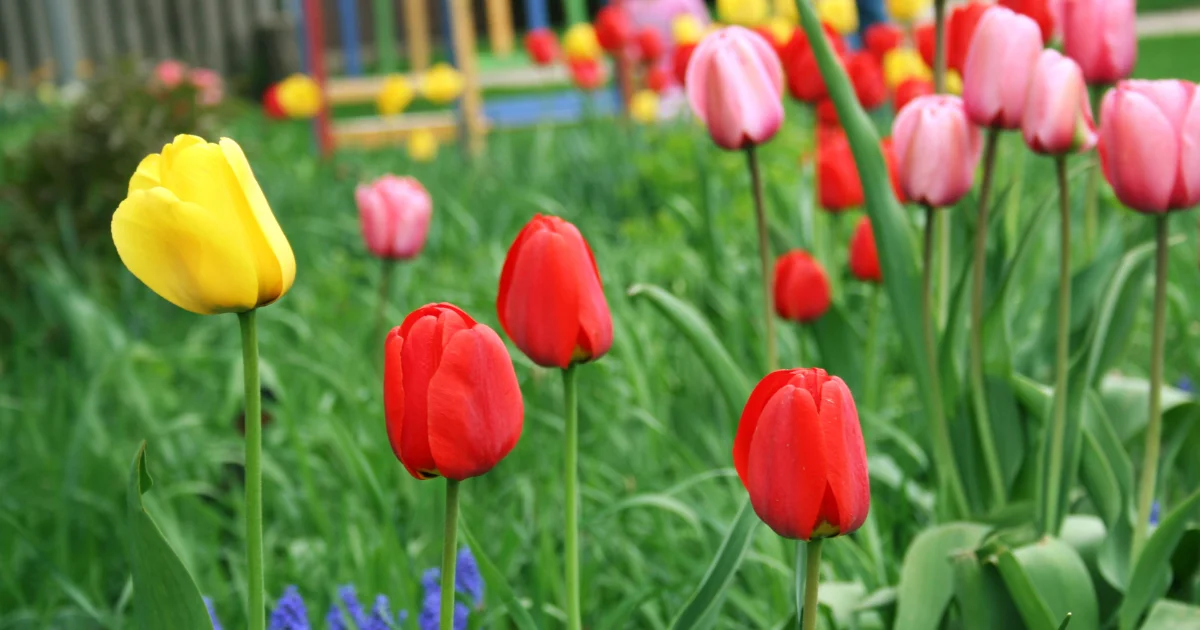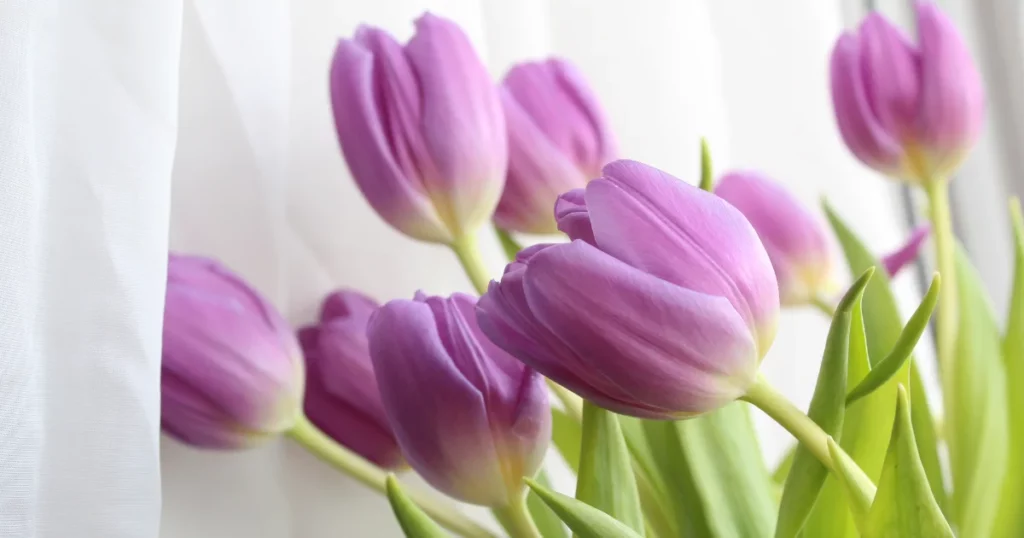What to Do With Tulips After They Bloom?

After marveling at the stunning display of your tulip blooms, you might be wondering, what to do next? Don’t let your gardening journey end with the last petal’s fall. In this comprehensive guide, we delve into the essential post-bloom care for tulips.
Whether you’re a seasoned gardener or a budding enthusiast, discover the secrets of deadheading, the nuances of proper bulb care, and the art of preparing your tulips for a spectacular show next spring.
Let’s nurture your garden’s potential and ensure your tulips continue to thrive and dazzle year after year.
Here’s What You Must Do With Tulips After They Bloom:
1. Deadheading
- Why Deadhead: Removing spent flower heads, or deadheading, prevents the tulips from expending energy on seed production and encourages them to focus on strengthening the bulb for next year’s growth.
- How to Deadhead: Snip off the dead flowers at the base with garden shears or scissors. Be gentle and avoid damaging the stem.
Related: Best Plants for Shallow Pots
2. Foliage Care
- Importance of Leaves: After flowering, it’s crucial to leave the green foliage on the plant. The leaves are needed for photosynthesis, which helps the plant store energy in the bulbs.
- Care for Leaves: Allow the foliage to naturally turn yellow or brown, which typically takes 4-6 weeks. Only then should you trim or remove the dead leaves.
3. Fertilization
- When to Fertilize: Apply fertilizer after blooming. This provides essential nutrients to the plant and is particularly important if you plan to lift and store the bulbs or for varieties that naturalize on their own.
- Type of Fertilizer: Use a high-quality natural bulb fertilizer or a balanced fertilizer that’s high in nitrogen and phosphorus.
Also Read: Low-Maintenance Indoor Plants for Living Room
4. Bulb Care and Storage
- Lifting Bulbs: If you choose to dig up tulip bulbs, do so after the foliage has died back. Utilize a garden fork, applying gentle pressure, to remove the bulbs from the soil.
- Inspection and Storage: Inspect the bulbs for disease or damage. Healthy bulbs should be firm and free of spots. Store them in a cool, dry place, preferably in net bags or mesh sacks at a stable temperature of 65°F to 68°F.
- Replanting: Plant the bulbs at the same depth they were previously, with spacing of about 6 inches. This helps in proper growth and flowering for the next season.
5. Additional Tips
- Soil Conditions: Ensure the soil is well-draining, slightly acidic, and full of organic matter. Tulips thrive in soil that doesn’t retain excessive moisture.
- Watering: Avoid overwatering, especially during the summer. The soil should be kept relatively dry after spring to prevent early blooming.
- Perennializing Tulips: Some tulip varieties, like Darwin Hybrid Tulips and Parrot Tulips, are better suited for perennial growth and can re-bloom for several years with proper care.
In summary, the care of tulips after they bloom includes deadheading, proper foliage care, fertilization, careful handling of bulbs, and ensuring suitable soil conditions. These steps are essential to ensure that your tulips remain healthy and continue to bloom beautifully in the coming years.
Must Read: Best Trailing Plants for Hanging Baskets
FAQs Related to Tulips Bloom

Should I cut my tulips back after they bloom?
Yes, you should cut back your tulips using a garden scissor after they bloom, but with specific considerations. Once tulips have finished blooming, it’s advisable to deadhead them by removing the spent flowers. This process encourages the plant to focus on storing energy in the bulb for the next season, rather than diverting resources to seed production.
Can you leave tulip bulbs in the ground all year?
Yes, you can leave tulip bulbs in the ground all year. In fact, this is often the best approach for many varieties of tulips. After the tulips have bloomed in the spring, allow the foliage to remain until it turns yellow and dies back naturally. This process enables the bulbs to store energy for the next flowering season.
Can I leave tulip bulbs in pots after flowering?
After tulips bloom in pots, they’re like fleeting stars in a garden’s night sky: bright today, gone tomorrow. It’s better to say goodbye to these bulbs post-bloom and greet new ones next fall for a fresh display of color.
How to prune tulips after they bloom?
To prune tulips after they bloom, simply trim back the stem but leave the foliage intact. This allows the leaves to continue photosynthesis, feeding the bulb for next year’s growth. The leaves should be left until they die back naturally.
What to do with tulips after they bloom in the fall?
After tulips bloom in the fall, let the foliage die back naturally. Do not cut it off; this process allows the bulbs to store energy for the next growing season. Once the leaves have yellowed and died, you can then remove them. This care ensures the tulips are ready for their next bloom cycle.
What to do with tulips after they bloom in the summer?
After tulips bloom in the summer, trim the stem, leave the foliage to naturally die back, and continue watering. The foliage feeds the bulb for the next year’s growth. Once the leaves have yellowed and dried, they can be removed
What to do with tulips after they bloom in water?
After tulips bloom in water, it’s best to discard the bulbs as they typically won’t bloom again. The forced blooming in water depletes their energy and makes future blooms unlikely.
What to plant after tulips die?
After tulips have finished blooming, a variety of plants can be used as companions to enhance your garden’s aesthetics. Ideal choices include Brunnera and Hostas, known for their large, attractive leaves that cover the dying tulip foliage.
For early spring beauty, Grape Hyacinth and Virginia Bluebells are excellent, offering lovely blooms and foliage. Snowdrop Anenome is a great option for its drought resistance and green foliage, while Creeping Phlox creates a stunning carpet-like effect.
If you’re looking for summer vibrancy, Columbine and Speedwell bloom beautifully after tulips fade. Additionally, herbaceous perennials like Catnip, Sage, and Rosemary can provide a fragrant and visually appealing backdrop for your tulip garden.
Also Read: Plants that Grow Fast at Home
